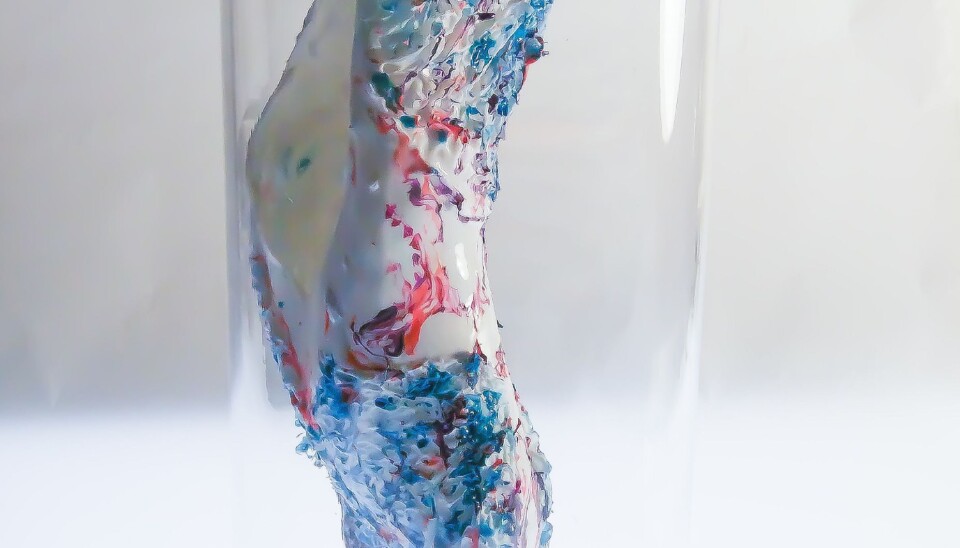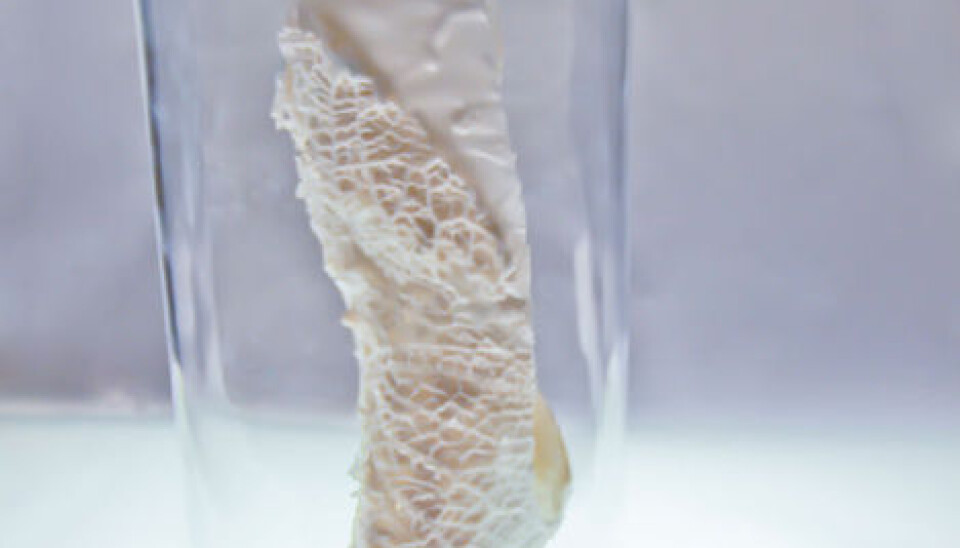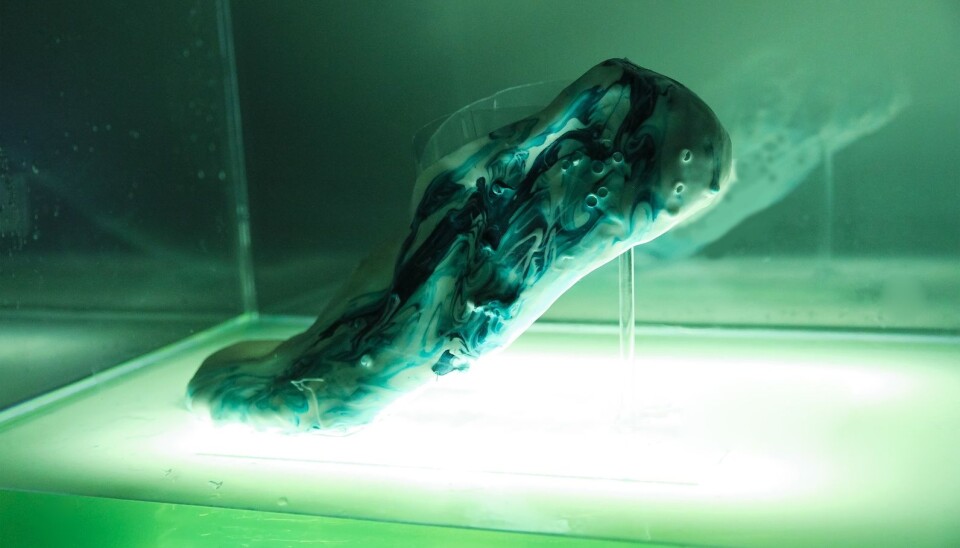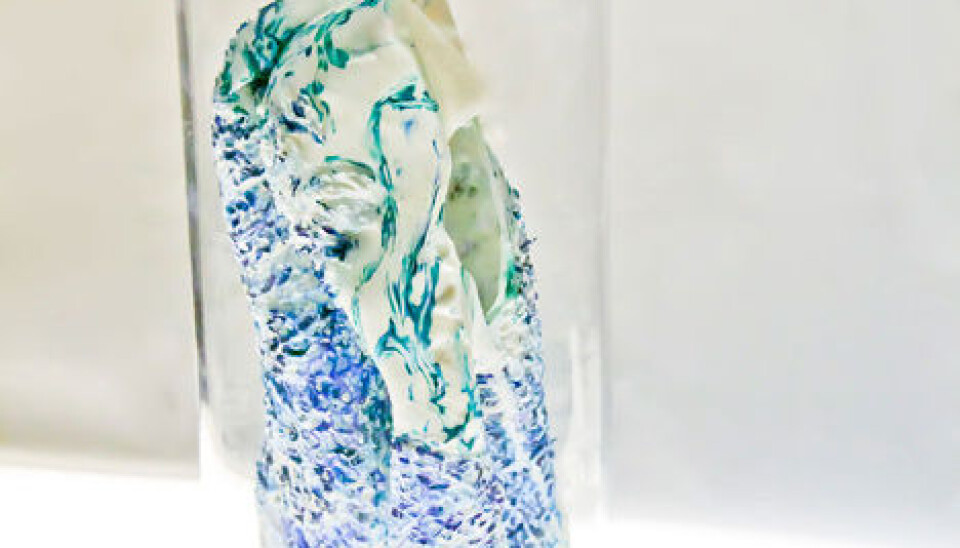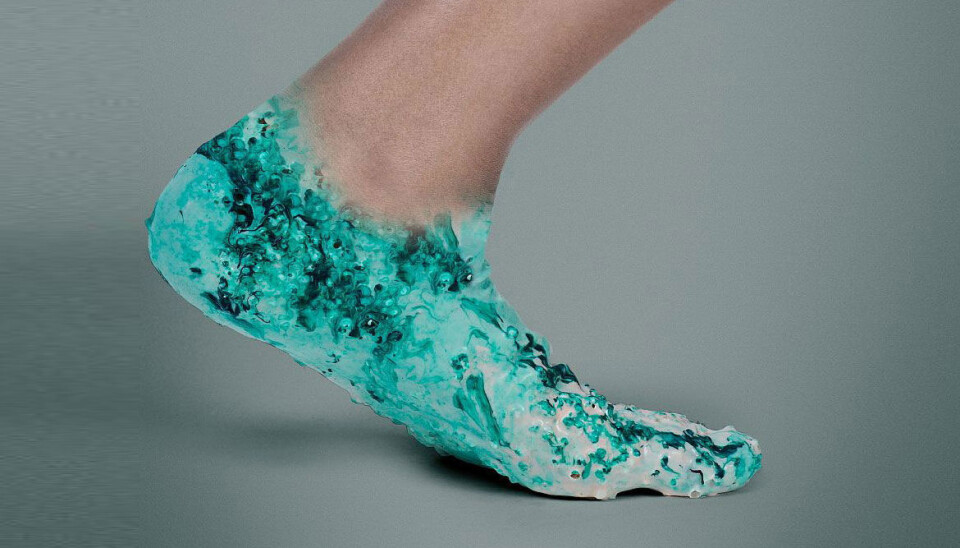A 3D-printed running shoe that regenerates itself
A running shoe that can regenerate itself overnight, and is printed in 3D to fit your foot perfectly. That is the vision of a British design project with Danish participation.
Running shoes are becoming increasingly sophisticated – but this one may well top them all.
London-based designer Shamees Aden is developing a shoe that can be printed in 3D so that it fits a foot just like an extra layer of skin.
The material used in printing the shoes is known as protocells. These are basic molecules which are not themselves alive but which can be combined to create living organisms.
Aden is developing the shoe together with Dr Martin Hanczyc, an expert on protocell technology from the University of Southern Denmark.
By mixing various types of these ’dead’ molecules, they will try to create materials that can be programmed to behave in different ways, depending on pressure, light and heat, thus providing extra cushioning if needed.
Hanczyc explains the background of his protocell research in this TED talk.
Shoe regenerates at night
At the recent ’Wearable Futures’ design conference in London, Aden explained that the protocells in his shoes will be programmed to inflate or deflate, depending on the type of surface they are being used on. In this way, the shoes will automatically adapt to the individual runner’s style and route.
For the shoes to function optimally, they need to be soaked in a liquid protocell solution when not in use. This solution regenerates and revitalises the protocells in the shoes.
It may take a while, however, before such shoes become commercially available. According to Aden, this is unlikely to happen before 2050. Until then you can have a look at the photo gallery above.
--------------------
Read the Danish version of this article at videnskab.dk

